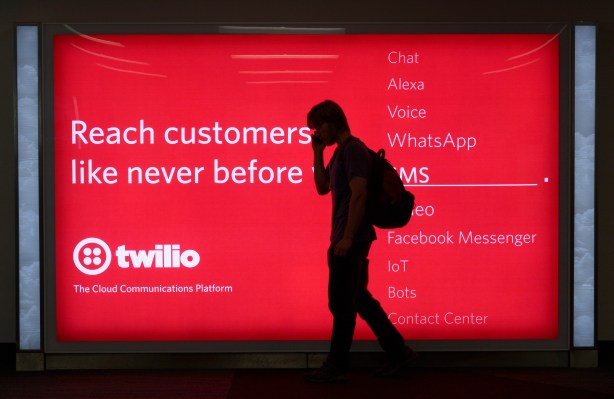Just a few hours after Spotify announced a large round of layoffs, Twilio is also announcing hundreds of job cuts. Around 5% of the company’s workforce will be impacted. Today’s news proves that we’re not done with tech layoffs.
And this isn’t even Twilio’s first round of layoffs, as the company cut around 11% of its staff in September, 2022. Just a few months later, in February of this year, Twilio laid off another 17% of its workforce.
Twilio’s workforce is shrinking at a rapid pace. A bit more than a year ago, Twilio had 7,800 employees. According to Twilio’s most recent earnings release, Twilio has around 5,900 employees. With today’s job cuts, around 300 people will lose their job in the near future — there will be 5,600 people working for the company.
Twilio originally started with a set of application programming interfaces (APIs) that let you programmatically send and receive phone calls and text messages. More recently, the company expanded its product portfolio with large-scale acquisitions. For instance, Twilio spent billions to acquire Segment and SendGrid.
“Last year, we made the decision to invest, ahead of growth, in go-to-market for Segment. Unfortunately, that bet hasn’t led to the growth outcome we’d hoped for. As a result, we’re simply spending too much. So we’ve made the hard decision to eliminate some of our Segment GTM roles – right sizing the investment for the results we’re seeing,” Twilio CEO Jeff Lawson wrote in an email to all employees.
“We’re also making changes to how we sell Flex,” he added later. Flex is a cloud-based contact center for customer service and sales teams. “So, we’re consolidating Flex GTM into Communications and eliminating many Flex GTM roles.” Some supporting functions in marketing and finance are also affected as a result of these changes.
One company, two business units
In February, Twilio restructured the company and created two separate business units. The communications division is the legacy division with the messaging APIs and transactional emails (with SendGrid), while the data and applications division hosts newer bets, such as customer data platforms (Segment) and engagement applications (Flex).
Twilio has faced activist pressure in recent weeks. In particular, Anson Funds has said that Twilio should sell the entire company or at least divest the data and applications division. As a result, people working for the data and applications division are more likely to be affected by today’s round of layoffs.
“We’ve made tremendous progress in Communications, even overachieving on our goals; however, we’ve underachieved on growth in TD&A. So we’re taking some steps to create a more effective GTM motion for Flex and recalibrate our investments in Segment, which combined will unfortunately mean parting ways with approximately 5% of Twilio’s workforce,” Lawson said.
Twilio shares are more or less flat right now. However, shares have been performing well over the past year. They are up 46% compared to December, 2022. It values the company at $12 billion.
Of course, Twilio is still below its peak share price of $443.49 during the 2021 tech boom — Twilio shares are still down 85% versus the company’s all-time high. But does it really matter? The tech industry has changed drastically since then and it’s unlikely that tech companies will even be able to reach high valuations like that in the near future.
Affected employees will receive 12 weeks of base pay plus one week for every year of service, as well as “other elements to help with this transition.” Twilio expects to spend $25 to $35 million in charges related to the workforce reduction.
